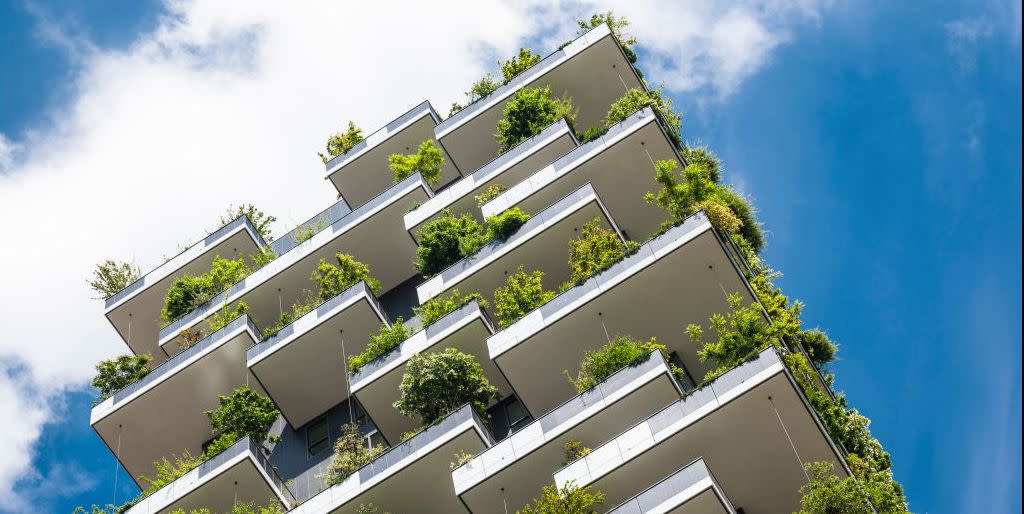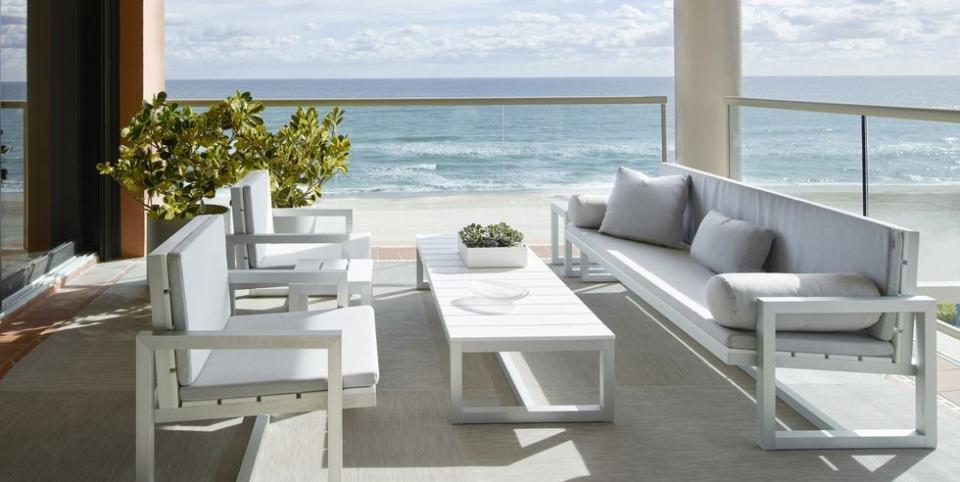A Plant Pro Reveals the Best Balcony Plants for Every Space

You may not have a yard, or even a terrace. But, if you’re reading this story, chances are you have a balcony that’s in need of some plant love. Committing to growing a garden—or even a plant or two—can be a daunting process, and it’s easy to feel defeated before you’ve even begun. But growing plants under so-called “unideal” circumstances is much easier than you’d think.
To debunk these myths—and show us how to do it right—we consulted with plant expert Erin Marino of The Sill.
Don’t let your small outdoor space stop you from becoming a plant parent. Read on for the best balcony plants to buy, and how to grow them the right way.
Factors to Consider Before Growing Balcony Plants
Marino suggests you ask yourself a few questions ahead of committing to a balcony garden, or purchasing any plants.
1) How Big is My Balcony?
Whether you have a spacious full-sized balcony, a small Juliet balcony, or even a tiny fire escape, you do have the ability to grow plants outside.
2) How Much Time Do I Have to Care for and Maintain My Plants?
While plants can be very low maintenance, you want to make sure that you don’t choose a variety that requires more attention and care than you can manage.
3) What Is My Outdoor Environment Like?
SUN
“The heat and sun will dry out your plants much faster outdoors than indoors,” Marino says. “You’ll want to check on your houseplants daily! If you miss one watering indoors, your plant can definitely bounce back. But if you miss one watering outdoors, it might be the end of it.”
Many city balconies are constructed of brick or concrete, both of which absorb and radiate heat very well. If your balcony is made from either material, be extra cautious of your plants on hot, sunny days. “If you aren't careful, your favorite houseplant can end up like an egg on the sidewalk on a hot summer day!” Marino says.
RAIN
Aside from checking on your plants on a daily (or near-daily) basis, Marino also suggests you choose containers wisely to ensure that your plant doesn’t drown in the case of excessive rain. “It’ll rain at some point—especially during New York City summer,” Marino says. “That could mean trouble for any houseplants in containers without drainage holes.”
TEMPERATURE
If your climate is generally the same year-round, there isn’t too much adjusting needed to keep your balcony plants alive. As the weather gets warmer/sunnier/dryer, your plants will need more water; as weather gets cooler/darker/wetter, your plants will need less water.
As for people living in climates that experience a true winter, once cold weather hits you will have to bring your plants indoors. According to Marino, “When you bring your plants inside, they’ll be receiving much less light. They’re already slightly prepared for the lack of light that comes with the dormant season, but it’ll be even more pronounced because they had outdoor light all summer. Less light means less food—which means your plant will have a difficult time supporting all the new growth from its summer outside.”

WIND
“One of the biggest challenges a balcony or rooftop gardener faces is wind,” Marino says. “Wind can not only knock pots and planters right over, but it can also snap the stems or leaves of more fragile, immature plants. It's something our indoor houseplants rarely have to face (aside from the rouge air conditioner or heating system), so they’ve not adapted to strong winds like outdoor plants have.” Wind can also dry out or chill your plants, so it is important that you check on your plants in windy weather to make sure they are adequately watered and not too cold.
4) What Type of Container Should I Choose?
When it comes to choosing a container, “Pick containers that will withstand the elements—like rain, snow, and wind—if you plan to keep them outdoors all year long,” Marino says. “Choose sturdy containers like terra cotta or stoneware over plastic; these materials are generally heavier and will have better stability on windy days.”
Marino's General Tips & Tricks
The darkest shade outdoors is still brighter than a bright window indoors,” Marino says. If you are moving your plants from inside to your balcony, be cautious that it is taking in much more sunlight.
Study your sunlight! What direction does your balcony face, and how much sunlight does it get?
Keep everything in containers to make seasonal changes easier to facilitate.
Group containers/planters together to make watering day more efficient. During hot, sunny summer days—some plants could need to be watered daily!
Don’t be afraid to test out growing herbs and vegetables, which tend to fare way better when grown outdoors versus inside.
Make peace with any “wildlife”—you’re in their space!
You Might Also Like

